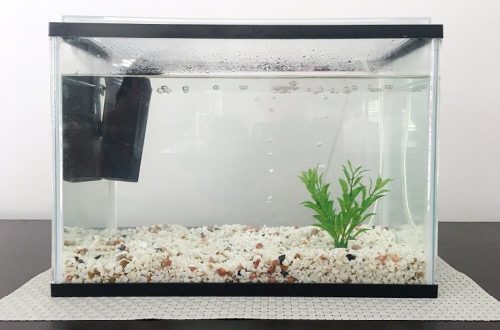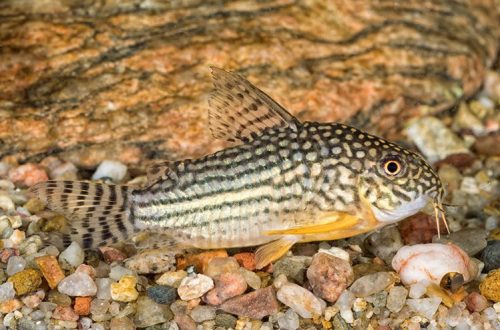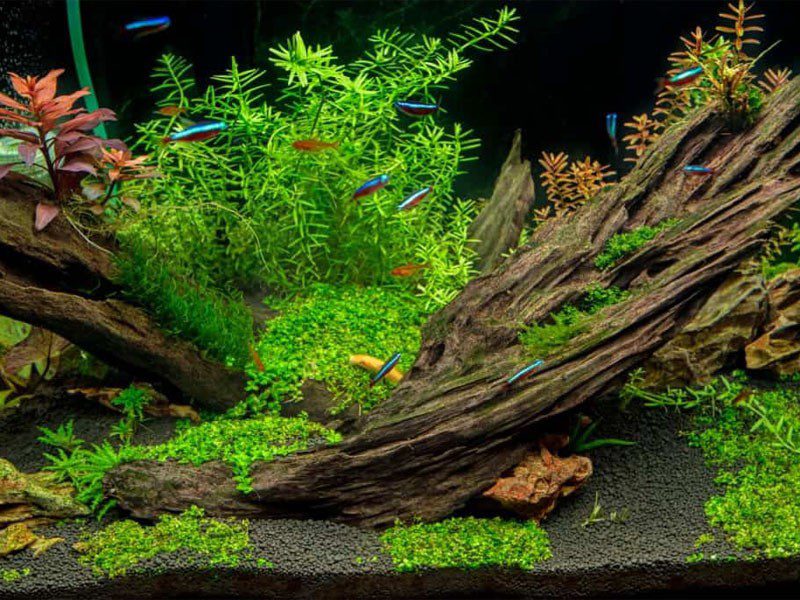
How to make a driftwood for an aquarium with your own hands
First of all, you need to decide – from which trees you can make snags for the aquarium. The answer is simple: any deciduous trees that grow in abundance in temperate latitudes. Conifers are not suitable because of the resins they contain. Excellent snags are obtained from both wild (birch, oak, hazel, etc.) and fruit trees (cherry, apple, etc.) trees.
You can use all parts of the tree from roots to branches. It is believed that the roots are more preferable because they have a complex shape than the branches. Accordingly, they look more beautiful, although this is very subjective.
Contents
Stages of preparation of driftwood
First stage. Choosing the right / favorite tree
Choosing a tree for driftwood in an aquarium
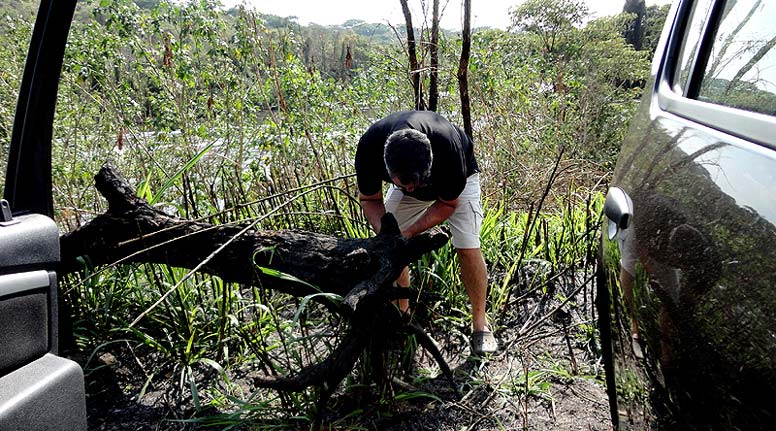 Separation of fragments from a fallen tree (future snags) and loading into a car
Separation of fragments from a fallen tree (future snags) and loading into a car
In the nearest forest or not far from your summer house, you can find broken or fallen trees with uprooted roots. And in the reservoirs there will surely be a driftwood – a once drowned tree, a bush. Using an ax or a saw, separate the fragment you like. It is not necessary to adjust it on the spot to the size of the aquarium. At home, doing this will be much more comfortable.
Where not to collect driftwood for an aquarium
Near large industrial facilities, highways and other busy roads, within the city. The explanation suggests itself – in such places, trees accumulate various pollutants in themselves, which potentially pose a threat to the inhabitants of the aquarium.
Second phase. Processing and disinfection of driftwood
Raw driftwood for the aquarium
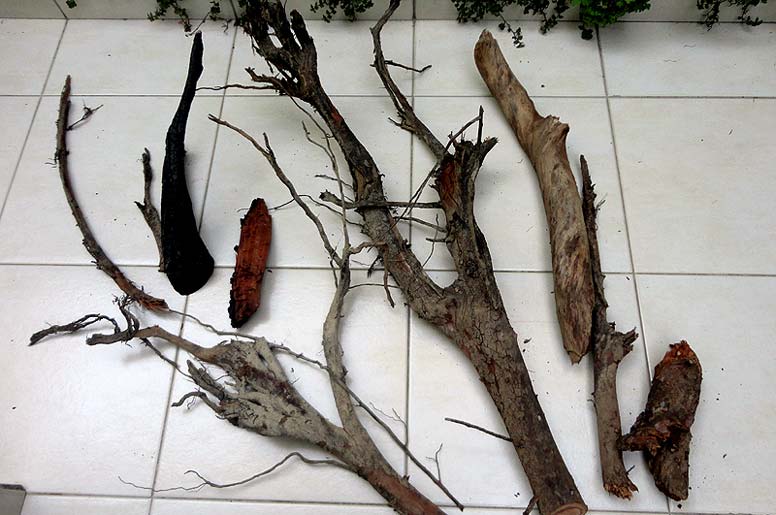 Rough driftwood and fragments of wood lie on the tiled floor
Rough driftwood and fragments of wood lie on the tiled floor
When the snag is delivered home and cut into the right pieces, or freed from extra branches, it must be processed and disinfected to remove contaminants and get rid of various microorganisms. In addition, the processing process solves another problem – the buoyancy of wood.
Cleaning driftwood for an aquarium
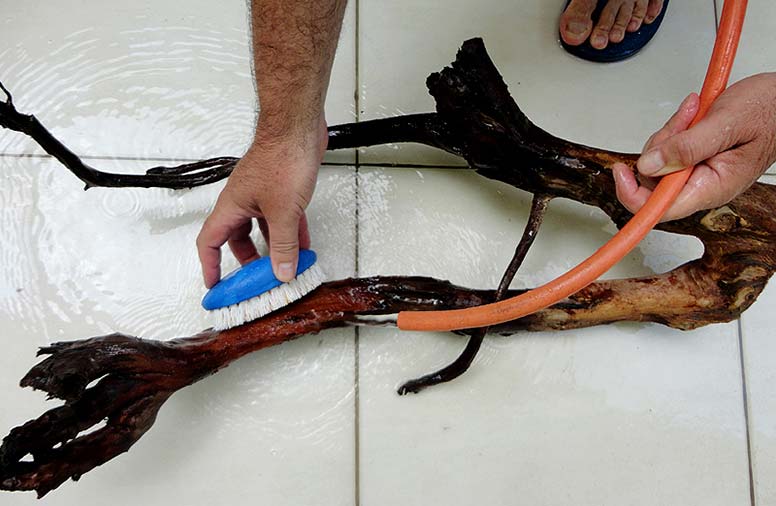 The driftwood is cleaned with a brush from dirt and bark under running water.
The driftwood is cleaned with a brush from dirt and bark under running water.
Place the driftwood in a container of water so that it covers it completely, and leave it for a couple of days. You will probably need a small weight to keep the driftwood from floating up. Then it is taken out and under running water is cleaned of bark and dirt with a brush with stiff bristles or scraped with a knife. The next step is disinfection.
Methods for disinfecting snags
Method number 1. Treatment with active chlorine
The principle of operation is the same as the treatment of tap water. The already cleaned snag is again placed in a container, but this time chlorinated water is poured. As bleach, I use the usual 4% Whiteness in a ratio of 1.5 ml. for 20 liters. The procedure takes three to four days.
Method number 2. Salt treatment
In high concentrations, salt is lethal to many organisms, especially those from freshwater. The peeled snag is immersed in a container of salt water. The minimum concentration of salt is four teaspoons per 1 liter of water. The procedure takes about a week.
Method number 3. Boiling
Boiling driftwood for the aquarium
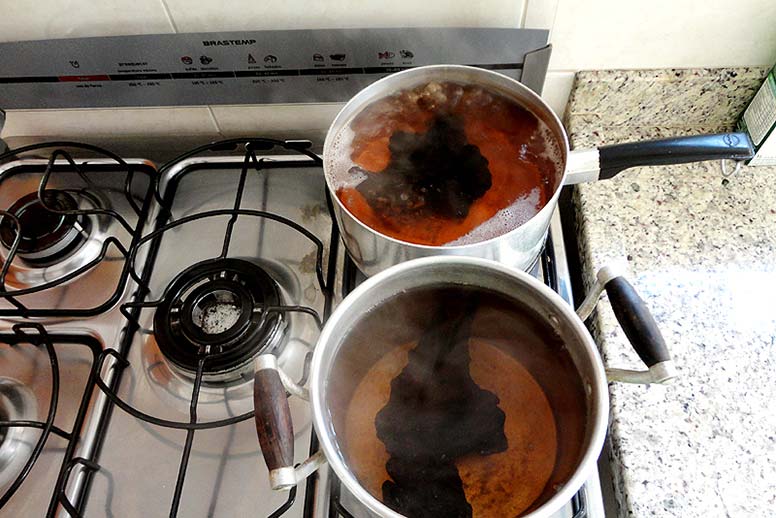 Disinfection of driftwood for an aquarium by boiling in a pan on a gas stove
Disinfection of driftwood for an aquarium by boiling in a pan on a gas stove
The best option if the snags are small and you don’t feel sorry for any pan. You can boil for 15-30 minutes. Next, the driftwood is left to cool in the same water.
When the driftwood is cleaned and disinfected, the longest process begins – getting rid of buoyancy. As you know, the tree does not sink. However, with prolonged exposure to water, the fibers of the wood swell and it begins to sink. Depending on the size and type of tree, this process can take up to a month.
The snag is placed in water and waited for it to sink. In this case, the water should be updated daily with a new one.
Soaking driftwood for an aquarium
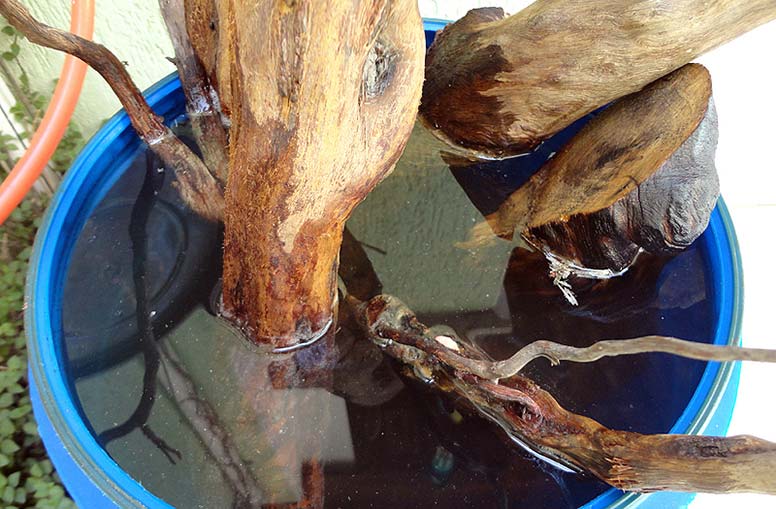 The cleaned and disinfected snag is immersed in a container of water
The cleaned and disinfected snag is immersed in a container of water
During this time, chlorine residues evaporate from the driftwood if a similar method of disinfection was used. It also leaches out organic tannins, such as tannins, which turn the water brownish. For example, a lot of tannins are found in oak.



